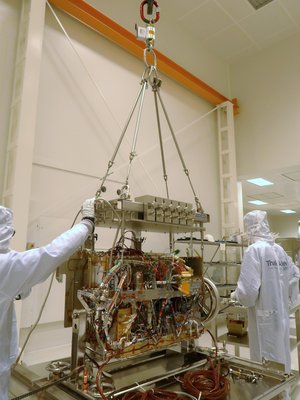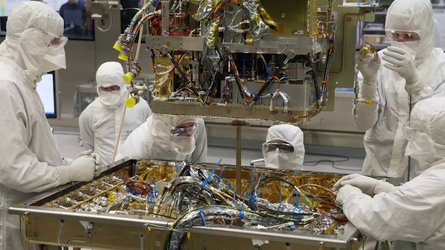

ExoMars Analytical Laboratory Drawer
A key set of scientific instruments developed for the ExoMars rover Rosalind Franklin passed tests April 2019 to ensure compatibility with the martian environment.
The rover’s Analytical Laboratory Drawer (ALD) flight model completed its thermal and vacuum sessions in Turin, Italy, at a Thales Alenia Space Italy facility.
The ExoMars rover ALD system is designed by Thales Alenia Space Italy in Turin and carries a set of four complex mechanisms developed by OHB in Munich, Germany, that can process and supply soil samples to three scientific instruments. Dedicated control electronics and a thermal control system will keep the system working and operating at the required temperatures while preserving the Mars samples and possible traces of organic molecules.
The instruments will make a detailed study of the composition and chemistry of the soil samples collected by the Rover’s drill. Following a process similar to a factory floor, once acquired from the drill, samples are dropped into a crushing station and pulverised. The fine powder is then dosed and moved on to the next area for precise distribution – either on a refillable container or in thumb-sized ovens where the specimens are analysed.
The Analytical Laboratory Drawer houses three instruments to search for signs of life on Mars.
The ‘MicrOmega’ instrument uses visible and infrared light to characterise minerals in the samples; a Raman spectrometer uses a laser to identify mineralogical composition and lastly a combination of a Laser Desorption Mass Spectrometer and of a Gas Chromatograph (part of the “MOMA” instrument) will study and identify soil chemistry. The most scientifically interesting samples, will be dosed into the MOMA ovens. The ALD has 31 ovens, where samples can be heated and the vapour and gases emitted will be analysed with gas chromatography techniques to look for traces of organic compounds.





